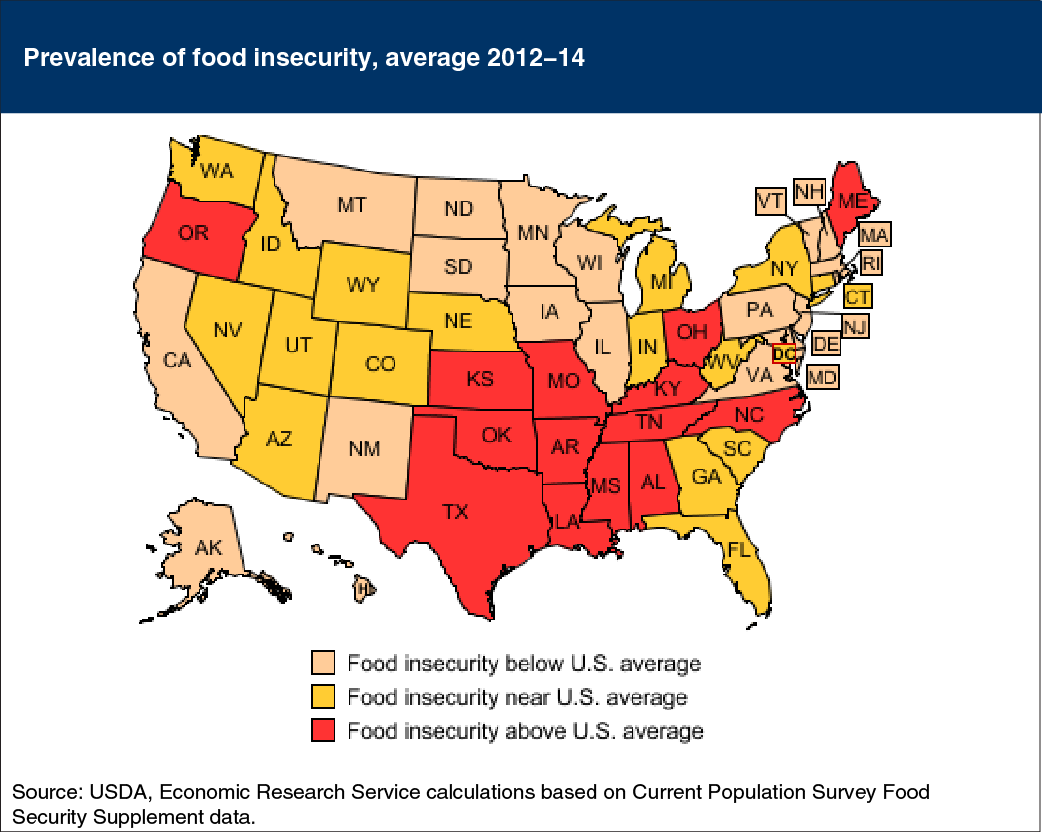Prevalence of food insecurity varies across the country
- by Matthew P. Rabbitt and Alisha Coleman-Jensen
- 12/17/2015

USDA monitors the extent and severity of food insecurity in U.S. households at the national and State levels. Food-insecure households are defined as those that had difficulty at some time during the year providing enough food for all their members due to a lack of resources. Food insecurity rates differ across States due to characteristics of the population, State-level policies, and economic conditions. Estimated prevalence rates of food insecurity during 2012-14 ranged from 8.4 percent in North Dakota to 22.0 percent in Mississippi. Data for 2012-14 were combined to provide more reliable State statistics. The prevalence of food insecurity was higher than the national average of 14.0 percent in 14 States and lower than the national average in 20 States. In the remaining 16 States and the District of Columbia, differences from the national average were not statistically significant. This map appears in ERS’s Ag and Food Statistics: Charting the Essentials.
We’d welcome your feedback!
Would you be willing to answer a few quick questions about your experience?

